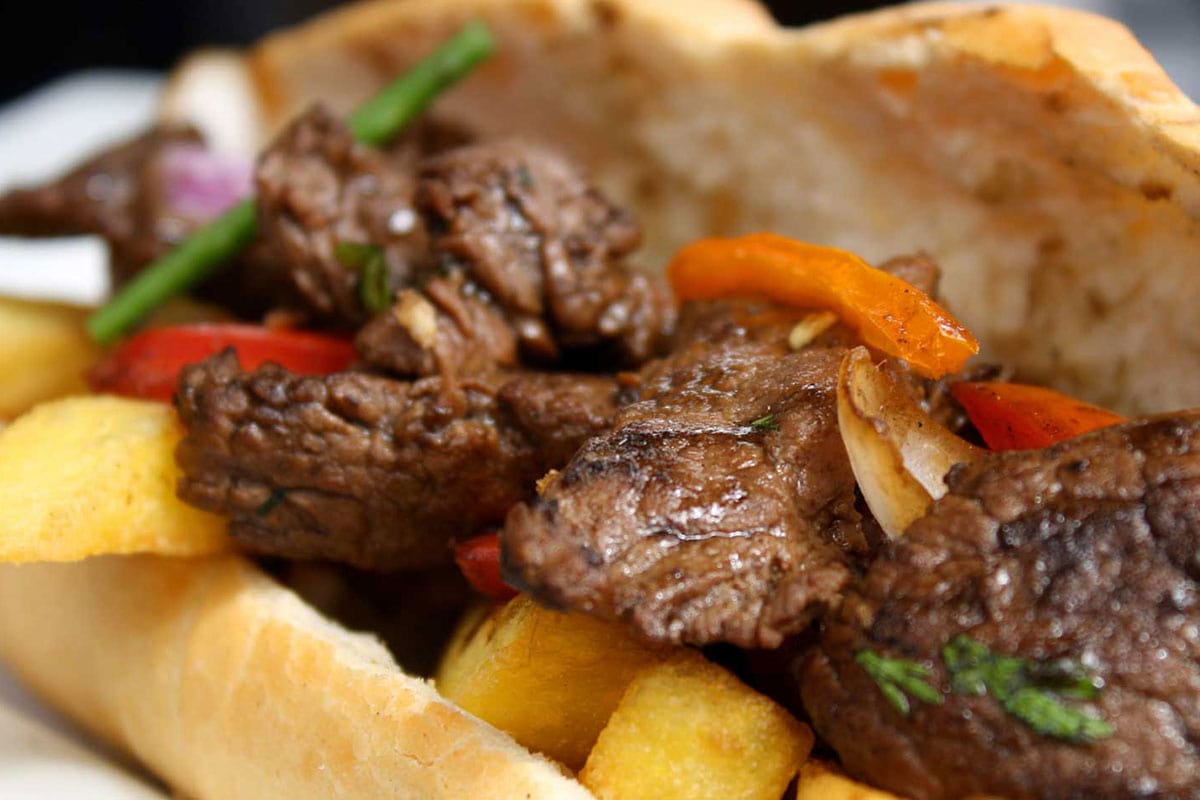
Peruvian food is a cuisine of opposites: hot and cold on the same plate. Acidic tastes melding with the starchy. Robust and delicate at the same time. This balance occurs because traditional Peruvian food relies on spices and bold flavors, ranging from the crisp and clean to the heavy and deep. Each flavor counters or tames the other.
South America boasts a rich culinary tradition, diverse flavors, and a vibrant street food culture. Peruvian gastronomy is leading the charge in combining modern cooking styles with traditional ingredients and traditional ways of preparing dishes.
An excellent example of this innovation in Peruvian cuisine is the success of Virgilio Martinez’s restaurant Central. In 2023, Central was recognized as the best restaurant in the world by The World’s 50 Best Restaurants, a testament to the prowess of Peruvian cuisine on the global culinary stage
With its unique blend of indigenous, Spanish, and Asian flavors, Peruvian cuisine stands out from the crowd in a culinary world that often favors conformity.
While many people see Peru as a land of cloud-topped mountains and ruins of ancient civilizations, Peru’s true treasure is its rich culinary heritage. Ingredients and cooking techniques from Africa, Europe, and East Asia come together in a delightful melange that is utterly unique the world over. But what kind of food do Peruvians eat?
For those familiar with the cuisine, the cooking methods and flavors are distinctive and immediately recognisable. The incredible diversity of Peruvian flavors, from tangy ceviche to the meaty lomo saltado are worth exploring, whether you’re an adventurous eater or you prefer familiar tastes.
So let’s take a look at some typical things to eat in Peru. These are the top 10 Peruvian dishes you absolutely must try.
Note: each dish is given a vegetarian-friendly ranking, a calorie level, and a spice level. But we recommend ignoring the calorie level and just indulging!
- Ceviche
- Lomo Saltado (Stir-Fry Beef)
- Aji de Gallina (Creamy Chicken)
- Papas a la Huancaína (Potatoes in Spicy Cheese Sauce)
- Cuy (Guinea Pig)
- Causa (Potato Casserole)
- Rocoto Relleno (Stuffed Spicy Peppers)
- Anticuchos de Corazón (Grilled Heart)
- Arroz Con Pato (Rice with Duck)
- Pollo a la Brasa (Roasted Chicken)
- Picarones
Ceviche
The national dish and one of the most popular foods in Peru, ceviche can cause instant obsession. Other nations (Mexico, Ecuador) have their own variations on the dish, but this raw fish served cold traditionally includes sea bass (corvina) or any firm, lean, white fish marinated for a few minutes in lime juice, onion, salt, and hot chilies (aji) is Peruvian to the core.
To balance the spicy protein, ceviche often includes a side of starchy boiled corn (choclo) and sweet potatoes (camote). For additional texture, dry roasted corn kernels (cancha) are scattered around to add a delicious crunchiness. Learn how to make Peruvian fish ceviche with our authentic recipe.
Bonus drink pairing:
Try the longstanding tradition of taking the leftover marinade of salt, lime, and chilis, mixing them with Pisco (a Peruvian brandy from which the famous pisco sour derives) and drinking it as a shooter.
And if you’ve overdone the pisco from the night before, a hangover cure might be in order. Skip the alcohol and drink the juice from the ceviche. We call this leche de tigre, which means tiger’s milk,and it has a wonderful tangy and refreshing taste.
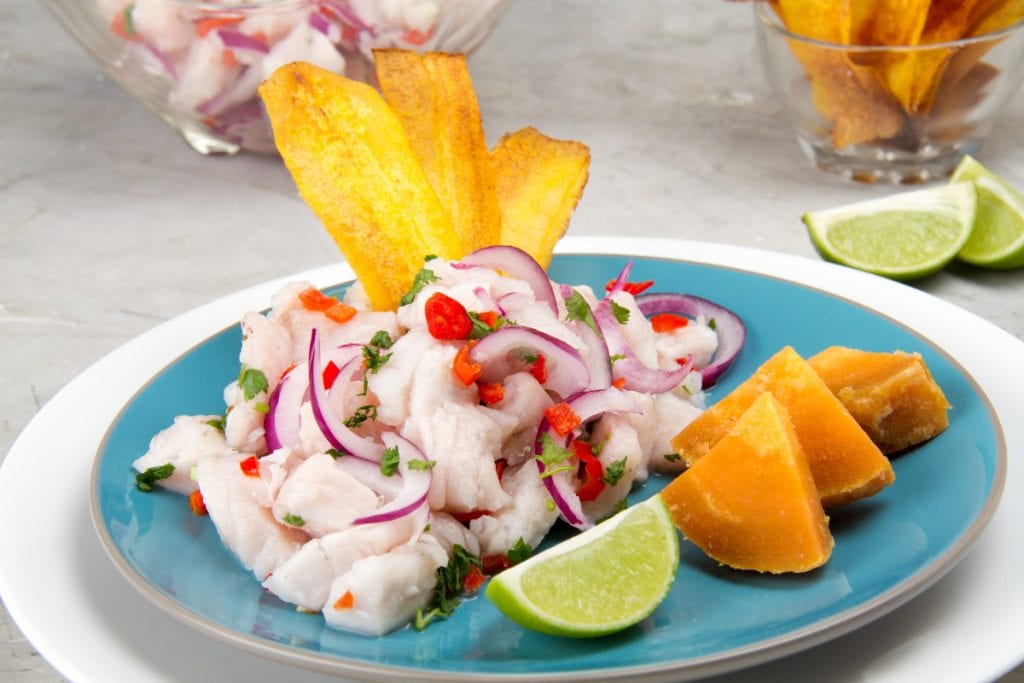
Vegetarian-Friendly: Only for pesco /ovo / lacto vegetarians (fish, eggs, milk)
High Calorie: No. Low calorie and low carb without the starches
Spice: Medium to hot spicy, depending on preparation
Lomo Saltado (Stir-Fry Beef)
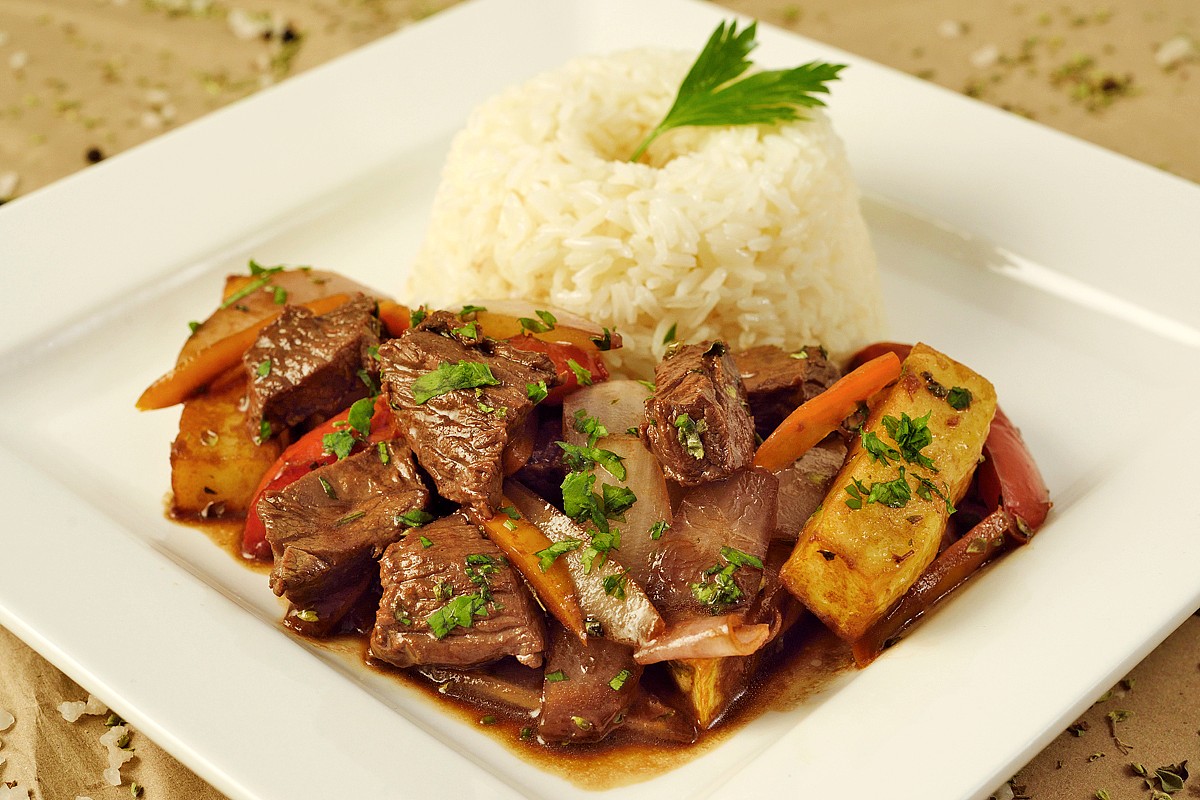
Coming in second only to ceviche in popularity, lomo saltado is a mix of Chinese stir-fry and classic Peruvian cuisine (Chinese ingredients play a major role in many authentic Peruvian dishes).
Tender strips of beef (occasionally you will find it made with alpaca meat) are marinated in soy sauce and add to onions, tomatoes, aji chillies, and other spices.
The ingredients are stir-fried together until the beef is the right level of cooked and the tomatoes and onions start to turn into a gravy-like consistency. An East-meets-West combo of starches: french fries (potatoes are frequently used in Peruvian dishes and are a staple in the diet) and a mound of steaming white rice.
Drink pairing:
Give Inca Kola, the most popular soft drink in Peru, a try. It tastes like a less sugary Mountain Dew. Check your local international grocery store to see if they carry it.
Check out our recipe for Lomo Saltado
Vegetarian-Friendly: Nope.
High Calorie: Moderate calorie count
Spicy: Medium spicy, depending on preparation
Aji de Gallina (Creamy Chicken)
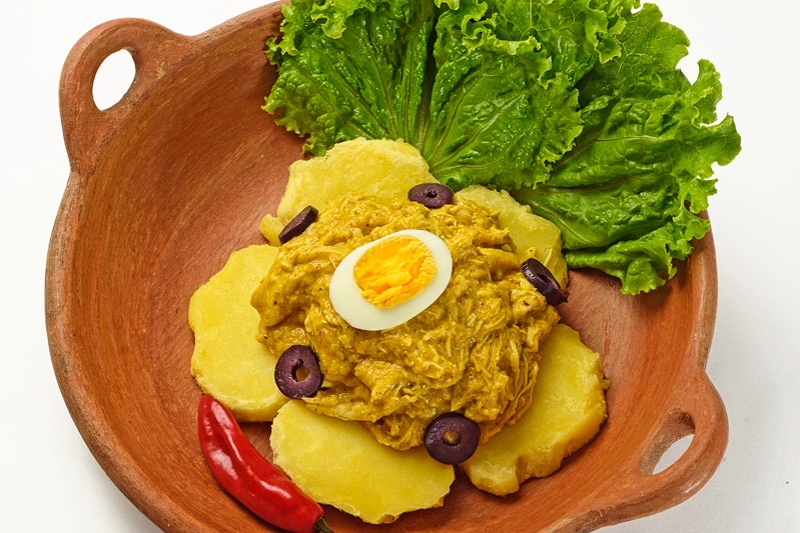
Imagine a shredded chicken prepared curry-style in a thick sauce made with cream, ground walnuts, white cheese, and aji amarillo. This mild but flavorful sauce, with just a hint of aji heat is tempered by the cream and cheese. The chicken, vegetables, and sauce are often served on a bed of rice, boiled potatoes, and black olives, giving it a rich, chowder-like consistency when everything is plated.
This dish pairs best with a dry white wine to counter the sweetness of the spicy sauce.
Check out our delicious Aji De Gallina recipe. If you like that, try this Peruvian Chicken and Rice dish.
Vegetarian-Friendly: No
High Calorie: Yes, it is full of delicious fats and carbohydrates
Spicy: Nope
Papas a la Huancaína (Potatoes in Spicy Cheese Sauce)
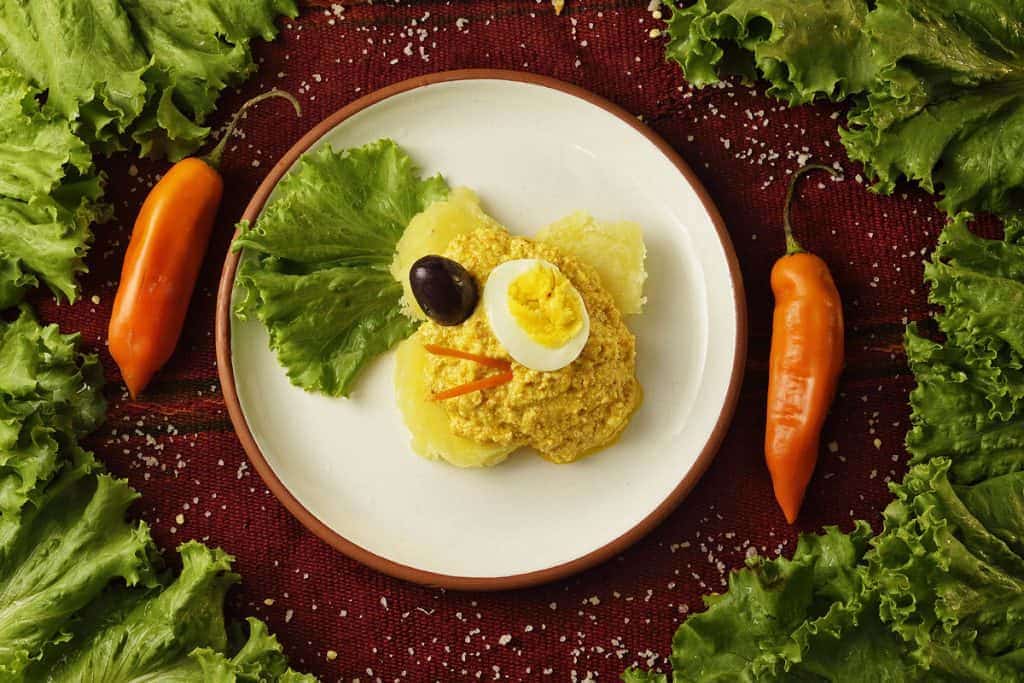
Another example of a Peruvian staple food smothered in creamy sauce is Papa a la Huancaína. This is a very popular dish in Peruvian cuisine and the ingredients include foods originally from South America and imported from Central America and Europe.
Sliced golden potatoes drowning in a puree of queso fresco, aji amarillo, garlic, egg, evaporated milk, and lime juice combine to create a creamy, tangy, and filling dish.
This glorious golden ambrosia has a subtle spiciness. The perfect balance of tangy lime, sharp queso fresco, earthy white potatoes, and boiled egg will please your taste buds.
This typical Peruvian dish is often served as a side to the main course. Papa a la huancaína also makes a mean appetizer when prepared with boiled purple potatoes steeped in sauce and seasoned with olives, eggs, and a sprinkling of more crackers.
Drink with a light bitter pale ale or a dry apple cider.
Vegetarian-Friendly: leave out is the eggs (if you’re vegan)
High Calorie: Yeah, but it tastes like hopes and dreams
Spicy: If you make it spicy, but generally no.
Cuy (Guinea Pig)
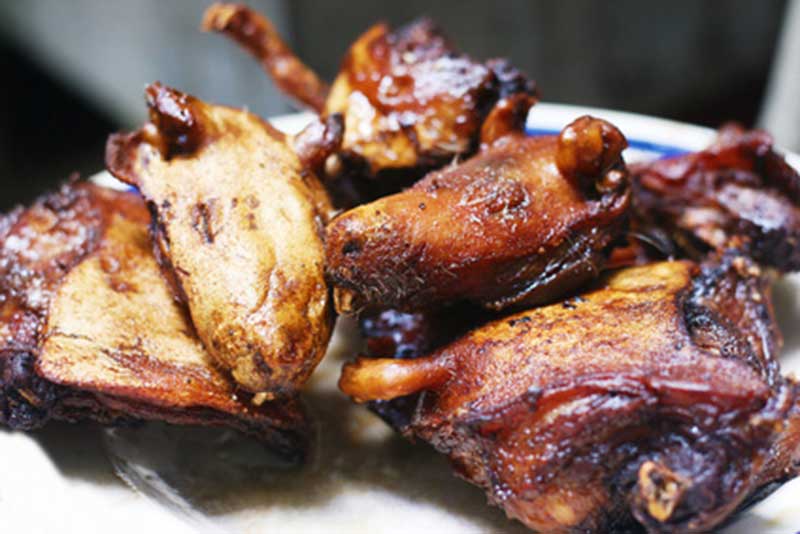
Guinea pig or cuy in Spanish is the second most popular source of meat in the Andes (alpaca being the first). The thoughts of eating a rodent or a pet may seem repulsive to some. Picture if you will though, a melt-in-your-mouth tender dark meat imbued with the taste of wood smoke, all beneath a crispy golden skin. Just imagine you’re eating a single-serving roast suckling pig or roast chicken.
In traditional Peruvian cooking, guinea pig is stuffed with local herbs and slow-roasted over an open wood fire. The dish is then served up with potatoes. A splash of aji amarillo sauce adds a nice spicy touch to this meat. Cuy al horno is generally eaten with the hands like a piece of fried chicken.
Try pairing it with a dark porter or stout beer to draw out the lighter flavors and counter the saltiness with the sweet.
Vegetarian: Definitely a no.
High Calorie: Nope, lean protein with just the right amount of fat.
Spicy: Depends on if you eat it with the aji sauce or not
Causa (Potato Casserole)
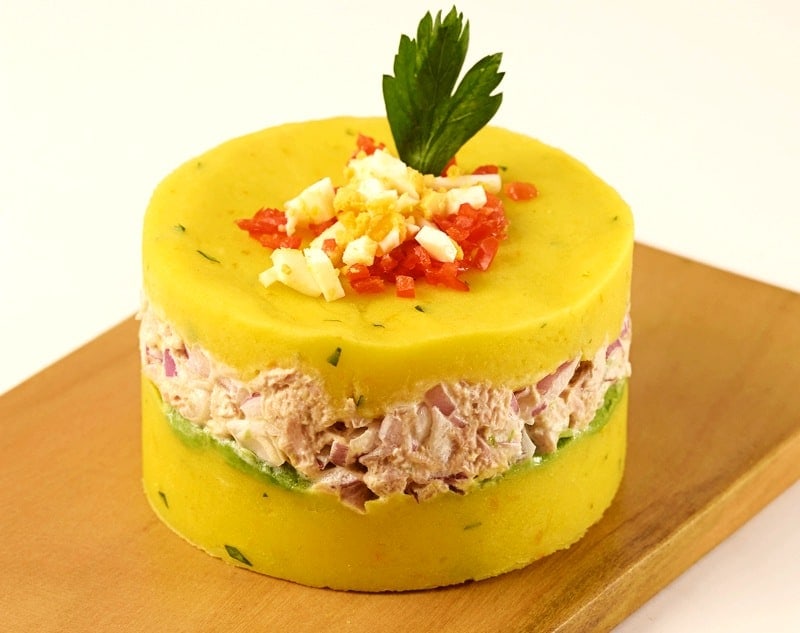
This native Quechan dish can be found all over Peru in countless variations. Causa Limeña (from Lima) is the best-known version. Serve as a cake roll, a casserole, a terrine, or even in bright and colorful individual portions. No matter how you make it, it’s all about the mash: yellow Peruvian potatoes combined with oil, lime, and spicy aji amarillo sauce.
For the meat filling, most chefs use shredded tuna, chicken or salmon blended in with mayonnaise. They then add layer upon layer of hard-boiled eggs, avocado (palta in Spanish), and olives. The top layer is always more of the base mash.
Causa is always served cold, usually as a side or salad with a meal.
Vegetarian Friendly: If prepared with a protein substitute
High Calorie: No
Spicy: Barely
Rocoto Relleno (Stuffed Spicy Peppers)
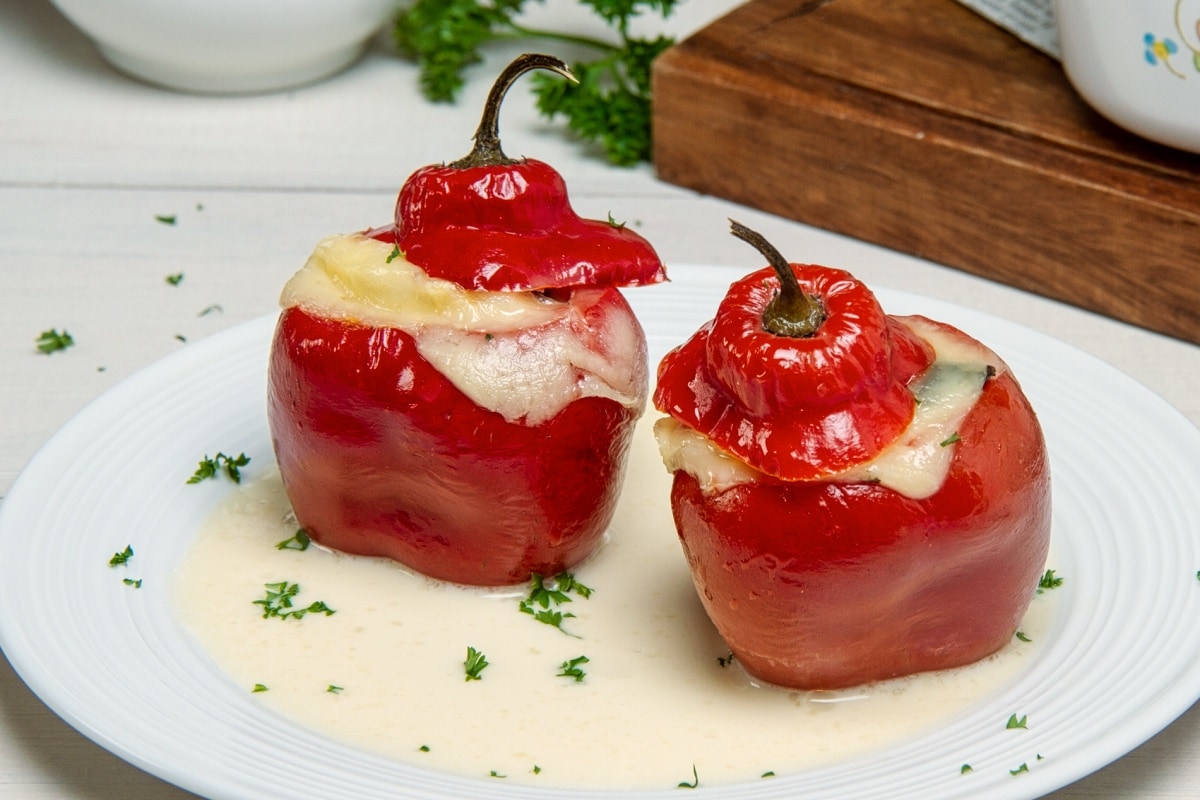
To prepare rocoto relleno, take red aji rocoto chilies. Core and hollow them out and stuff them with ground beef, garlic, onions, raisins, olives, herbs, and spices. Next, top it off with queso fresco and bake in an egg-and-milk custard.
Before you take your bite though you need to be aware of some facts: this is not an Italian stuffed pepper. Rocoto peppers are about the size of large plums, and about ten times hotter than a jalapeno pepper. If you can withstand the burn of that first bite though, the savory-yet-sweet filling will take the edge off nicely.
Vegetarian: If made with a vegetarian protein substitute.
High Calorie: Nope, lean and delicious
Spicy: Very, very spicy.
Anticuchos de Corazón (Grilled Heart)
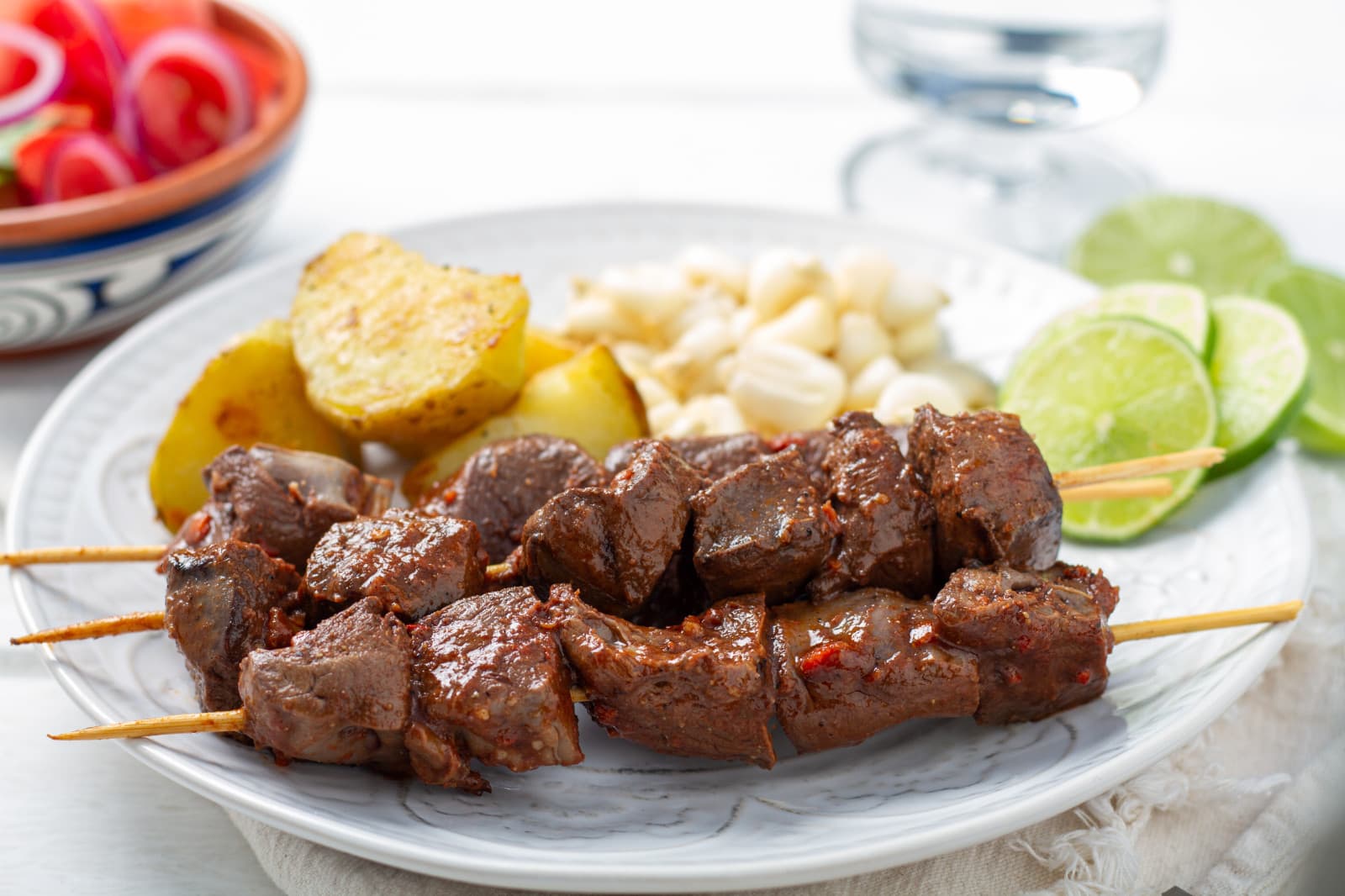
Don’t be deterred by the thought of eating hearts. Beef heart meat leaner than filet mignon, possesses a bolder, beefier flavor than ribeye, and is delicious when seared by an open flame. Heart meat is classified as offal, and is practically a superfood.
To make anticuchos de corazón, Peruvian chefs cut the heart into two-inch cubes and then marinate the alpaca or beef heart cubes in vinegar, cumin, aji (Peruvian chili pepper), and garlic. The cubes are then grilled over charcoal to a medium-rare temperature. Like kebabs, the cubes are often skewered along with slices of onion and potato and drizzled with lime.
Pair with a dry red wine to draw out the savory notes and the full flavor of the beef.
If you’re ever in Lima, don’t miss the excellent Tio Mario restaurant in Barranco which specializes in anticuchos. Tio Mario’s is a very popular and upscale anticuchería located near the Bridge of Sighs in this interesting Lima neighbourhood. Also worth checking out is Anticuchos de la Tia Grimanessa, which is more of a casual place, but the food is divine.
Vegetarian Friendly: Not even close.
High Calorie: No, exceptionally lean meal
Spice level: Moderate
Arroz Con Pato (Rice with Duck)
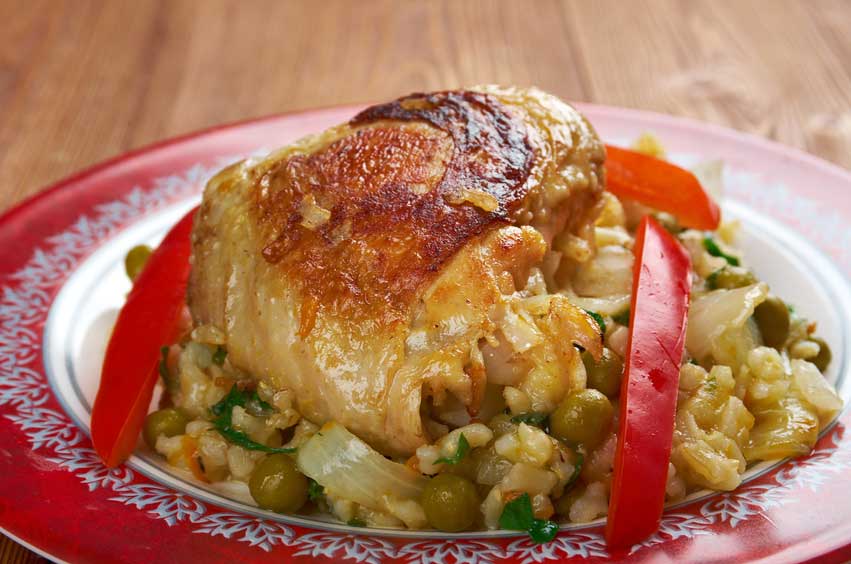
On the surface, this appears to be a simple Spanish Criollo recipe. In Peru, however, this is a signature dish with many variations. Typically, the rice is combined with cilantro paste, herbs, and dark beer to lend it a hearty, earthier flavor. Topped with a leg or thigh of roast duck (or crisp-seared duck confit in fancier varieties), this dish is served up on many household dinner tables all over Peru.
Pair with pinot noir or an older burgundy wine to draw out the gamey, earthy flavor of the duck.
Like this dish? Try Arroz Con Pollo.
Vegetarian Friendly: Not if you make it with duck
High Calorie: Yes
Spicy: No
Pollo a la Brasa (Roasted Chicken)
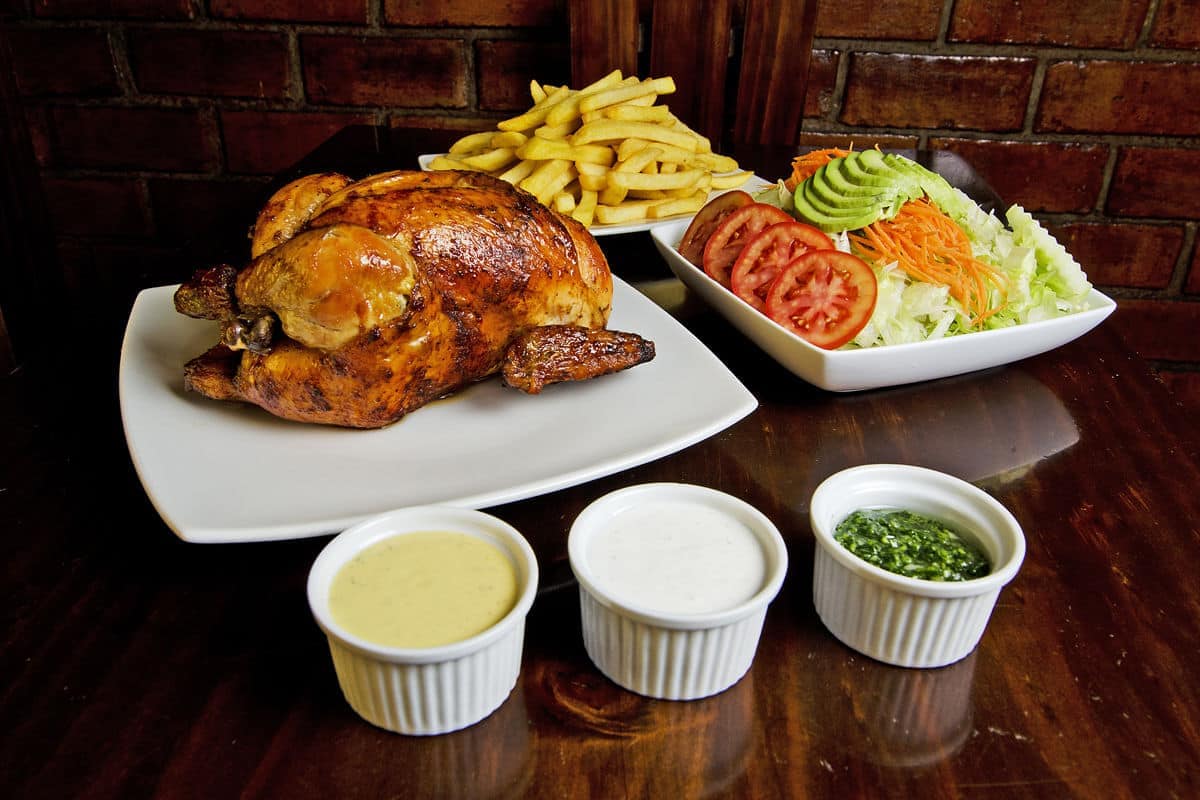
As the best known Peruvian food in the US due to the popularity of the many order-out Peruvian Rotisserie places scattered around the country. This is Peruano soul food. Chefs marinate a whole chicken in a potent combination of garlic, herbs and spices, then spit roast it over hardwood to give it its heavenly crisped skin and exotically earthy flavor.
Pollo a la Brasa is almost always served with a green huacatay (black mint) sauce.
Pair with a golden lager or light ale to really maximize the flavor profile.
Vegetarian Friendly: Not unless you hold the chicken
High Calorie: Nope, mostly protein
Spicy: Nope
Picarones
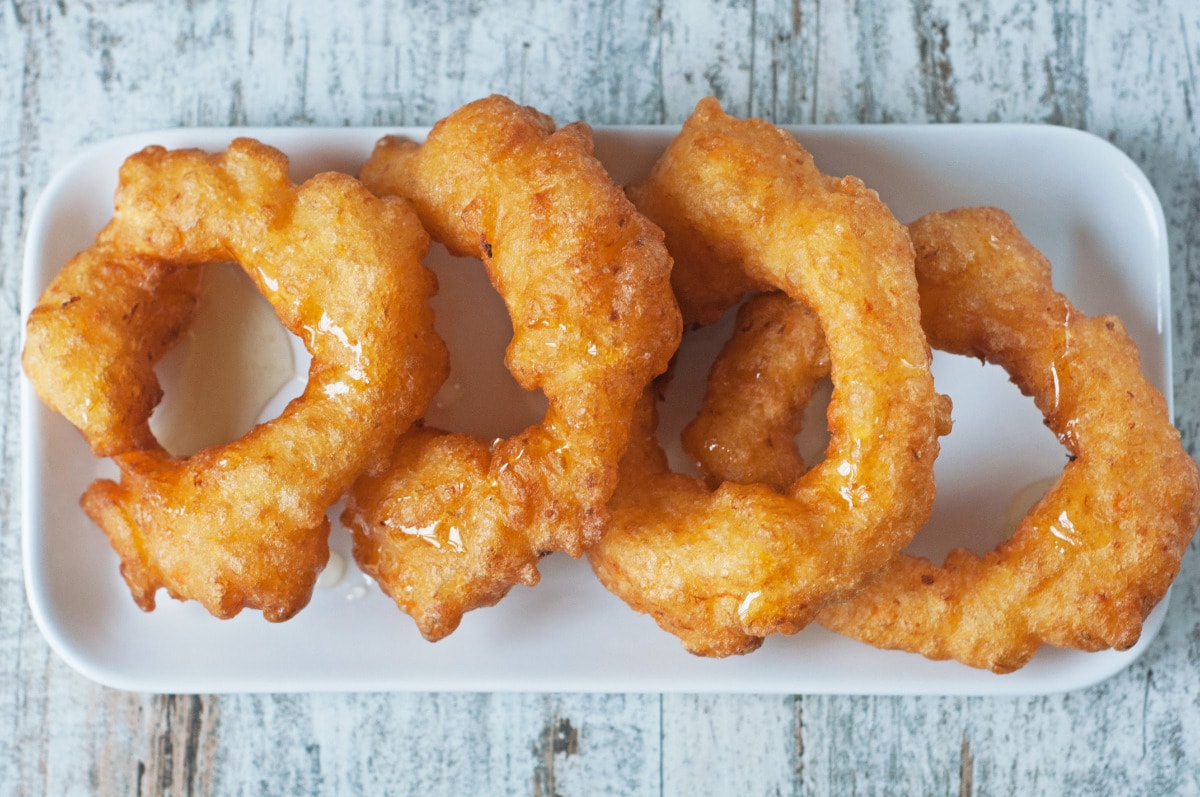
Let’s finish with one of my favorite Peruvian desserts, Picarones. This is also a favorite of the godfather of modern Peruvian cuisine, Gastón Acurio.
Picarones is a traditional Peruvian dessert (and breakfast dish) made from a doughnut-like batter that is deep-fried and often served with syrup. The batter base can be made with butternut squash, pumpkin, or sweet potato.
The beauty of this dessert is in the simplicity. It’s a classic street food dish that anyone can make, but not everyone can prepare well. The subtle manipulation of ingredients and cooking methods make all the difference.
Picarones are typically served warm, drizzled with a sweet syrup made of sugar. To add some variation, Peruvians typically add cinnamon or nutmeg, and serve topped with whipped cream or chopped fruits.
Picarones has its roots in Spanish buñuelos (fried dough balls) but is a popular dish in Peruvian households, at street food stalls, and increasingly, in all types of restaurants.
Vegetarian Friendly: yes
Calories: off the scale; definitely not for dieters
Spicy: No
Try our picarones recipe here. Once you’ve sampled one of these delicious authentic Peruvian dishes, it’s a good time to sample some more Peruvian desserts. As in most Latin American countries, dessert is always a hugely popular dish and makes up an important part of the meal.
Provecho!
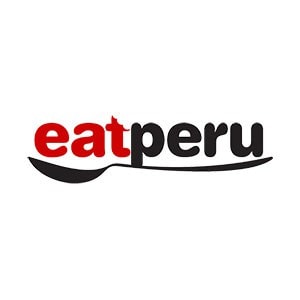
Peruvian foodie. I’ve been writing about the food of Peru for over 10 years. Read more about the Eat Peru team here

Johnny Norris
making me hungry!!!!!!! wow
Jo
Chinese won ton
Juan
buenisimo! Que lujo. Soy Argentino y me encanta la comida Peruana. Saludos desde España
EatPeru
Gracias Juan. Saludos!
abdulmuqeet
making me hungry!!!!!!! wow
Mike Junge
Making me HUNGRY….
I’ve got a trip to Peru in June…..I hope.
coco
love this!
Chris
What is the best Peruvian cook book for beginners.
Eat Peru
I like the simple recipes and presentation in Martin Morales’ Ceviche cookbook, which is named after the restaurant he used to own.
Samantha
I love me some good cuy!!!!!!!!!!!!!!!!!!!!!